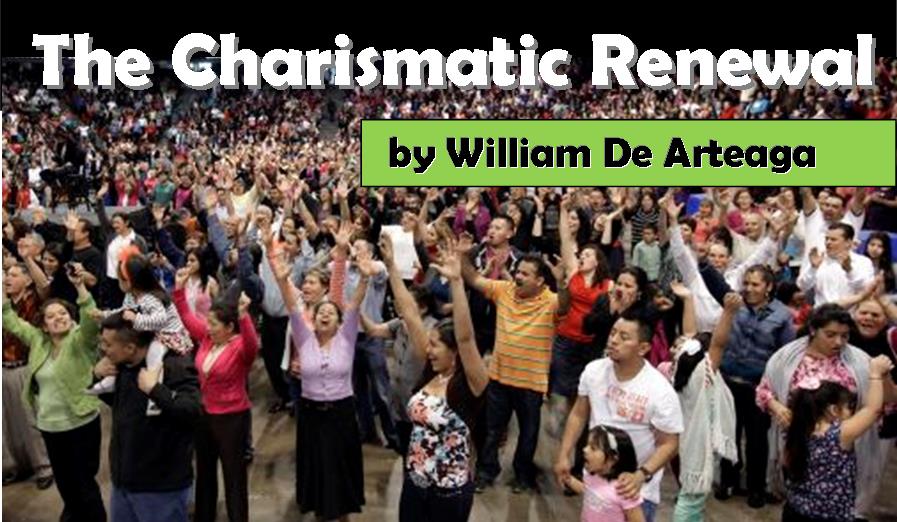The Charismatic Renewal
Historian William De Arteaga introduces us to the beginning and early years of the Charismatic Movement, when Pentecostalism and the gifts of the Spirit publicly and dramatically entered into the mainline churches.
 Previous articles in this series covered the origins of Pentecostalism, and the Full Gospel Business Men’s Fellowship International. Both groups played important roles in bringing the gifts of the Spirit into the Church as normal events. This article traces the history of the Charismatic Movement, when Pentecostalism and the gifts of the Spirit publicly and dramatically entered into the mainline churches. Many Spirit-filled believers today—Pentecostal, charismatic, or non-denominational—have no memory of how the Charismatic Movement began,[1] but its history should not be forgotten.
Previous articles in this series covered the origins of Pentecostalism, and the Full Gospel Business Men’s Fellowship International. Both groups played important roles in bringing the gifts of the Spirit into the Church as normal events. This article traces the history of the Charismatic Movement, when Pentecostalism and the gifts of the Spirit publicly and dramatically entered into the mainline churches. Many Spirit-filled believers today—Pentecostal, charismatic, or non-denominational—have no memory of how the Charismatic Movement began,[1] but its history should not be forgotten.
The Coming of the Charismatic Renewal
By 1960, there were large numbers of mainline Christians in the United States who were “closet Pentecostals.” They received the Baptism of in the Spirit mostly from contact with such para-church groups as the Camps Furthest Out (CFO), the Full Gospel Business Men’s Fellowship International (FGBMFI), and Agnes Sanford’s Schools of Pastoral Care.[2] Others came into the fullness of the Spirit through direct prayer encounters with God, as in the case of Rufus Moseley[3]. Most had learned to be prudent in manifesting the gifts of the Spirit in their mainline churches lest they be thrown out, or ostracized as “weird.”
There was no specific name for that type of Spirit-filled believer – one who exercised the gifts of the Spirit but remained within a mainline congregation. Some of those who received the baptism of the Spirit during the 1930s to 1960 were ministers or pastors within the mainline churches, and this posed a special problem for them. They were often asked to resign their charges or leave their denominations if they persisted in their Pentecostal ways.
But some ministers were able to keep their positions in spite of their Pentecostalism. Among these was a Lutheran minister, Harald Bredesen, who had a long association the CFO. He had offered to resign his position after he received the Baptism of the Spirit, but his bishop refused to accept it. Then in 1957, the Rev Bredesen accepted the call as pastor of Mount Vernon Dutch Reformed Church in upper New York. That church soon became the focus of local charismatic activity and worship.[4] A handful of other pastors succeeded in openly operating as Spirit-filled ministers within their denominations, among these were Fr. Richard Winkler (Episcopal, in Wheaton, Illinois) and the Rev. James Brown (Presbyterian in Parkesburg, Pennsylvania). All of this was low key and unnoticed on a national level. After the renewal became public in 1960, these men came into leadership positions of the general movement. For example, the Rev. Bredesen had a special anointing as a publicist. He seemed to be at the right place and time, and know the important media people. He was quoted and cited many times in the national press and was often on TV.
Category: Church History, Summer 2016


